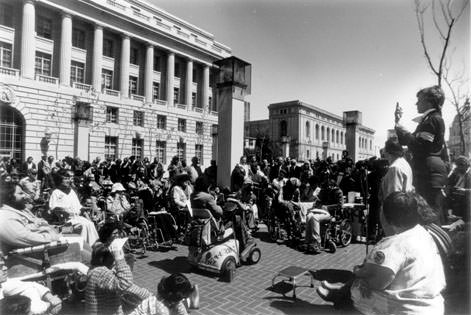
Are you registered to vote? National Voter Registration Day on September 17, 2024 is a good day to check. If you’re thinking why bother, read on to find out why voting matters and how voters with disabilities are protected.
R ─ REGISTER to vote prior to rolls closing for the November general election. If you don’t know the registration cut-off date, find the date in your State by clicking on this link, https://www.vote.org/voter-registration-deadlines/
E ─ EQUAL access to facilities and equipment is required. This includes the same opportunity for private and independent voting. Accessible voting machines—equipped with earphones and other modifications—must not only be in the precinct, but must also be ready to use.
Want to subscribe to receive blog updates sign up today!
G ─ GUIDE your vote with background information from an organization you trust.
I ─ IDENTIFY issues that are important to you and vote accordingly.
S ─ SEIZE the opportunity to voice your opinion in a way that counts.
T ─ TOUGH choices in troubled times is no excuse for not voting.
E ─ EXERCISE your right to vote and see change happen.
R ─ RESPECT for a voter’s pace and space is given.For example, election workers are trained tospeakwith a typical voice volume, tone and age appropriate subject matter and to allow voters to move at their own pace.
T ─ Tear through the trial of long lines, or people not wearing masks, and vote early or by mail.
O ─ OUTNUMBERthose with opposing views by casting your ballot.
V ─ VOTE because federal laws—the Americans with Disabilities Act and Help America Vote Act—protect the voting rights of people with disabilities.
In the 2018 midterm election, 20% of voters either had a disability or lived with someone who had a disability? Vote and be sure that our powerful voting bloc is heard.
O ─ ONE vote can make the difference between winning and losing an election. Google it and you’ll see. Tie votes have been broken by pulling a name out of a hat, a coin toss, or drawing the highest card. Don’t surrender your vote to chance!
T ─ TRAINING of election workers is mandated to promote access and participation of individuals with disabilities. Local disability advocates often conduct this training. For ten years, I provided disability sensitivity training to election workers on terminology, communication, respect, and access issues.
E ─ EDUCATE yourself on candidate platforms, referendums, and proposed amendments.
Image Credit: ELLE RITTER from Pixabay
You may also want to read:
- Jess Davidson. “REVving UP for 2024.” February 15, 2024. Blog. American Association of People with Disabilities. https://www.aapd.com/revving-up-for-2024/
- April Girouard. “Can One Vote Really Make A Difference? Published November 2, 2010, Last UpdateDecember 23, 2015. Fox News. https://www.foxnews.com/politics/can-one-vote-really-make-a-difference
- Domenico Montanaro. “Why Every Vote Matters — The Elections Decided By A Single Vote (Or A Little More).” November 3, 2018. National Public Radio. https://www.npr.org/2018/11/03/663709392/why-every-vote-matters-the-elections-decided-by-a-single-vote-or-a-little-more









